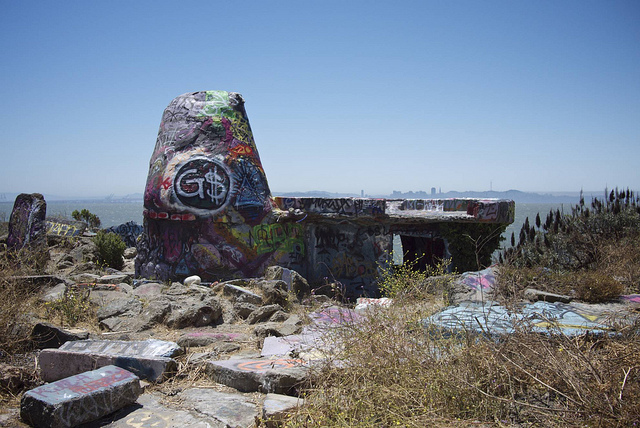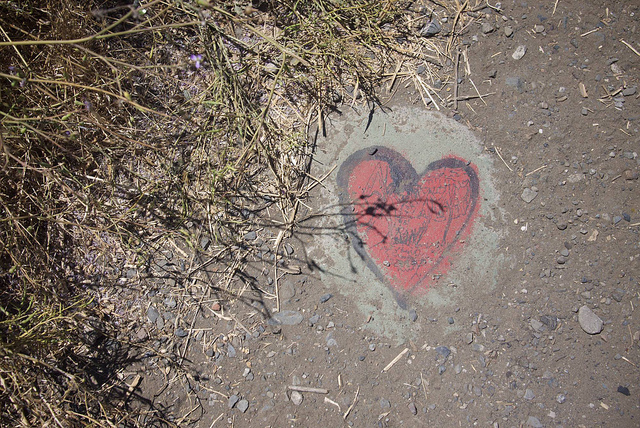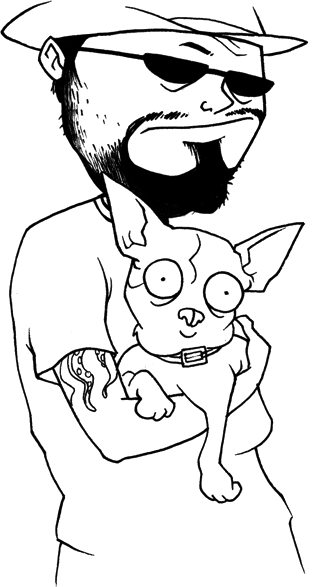On
30 August 2012 tagged Cute-Fight, Startups
 We’re working feverishly on Cute-Fight right now, so I’m thinking about startups. This is one of those thoughts.
We’re working feverishly on Cute-Fight right now, so I’m thinking about startups. This is one of those thoughts.
There’s an old quote from Wayne Gretzky: “Skate where the puck’s going, not where it’s been.” This has been widely adopted in startup circles to describe thinking ahead. The idea being, skating to where the puck’s going is good, and skating to where it’s been is bad.
The problem with this conventional wisdom is that Wayne Gretzky never launched a website. People are more difficult to predict than a hockey puck, especially in groups online. I’ve been a part of many startups since 1995 that have tried to skate to where the puck was going, only to wind up in the right place too soon, dead before any puck arrived; or wind up in the wrong place entirely, wondering where everybody went. Like I said, startups are all about timing.
When it comes to community-based websites, I prefer to find places where people already congregate and build a playground there. People like personal stories? Fray. People tend to complain online? Kvetch. People show off their best photos? JPG Magazine.
And those are just the ones I started. Blogger* may have created blogging, but it was just a tool to do something people were already doing. Blogger just made it easier and more fun. Same goes for Twitter, which is just a much easier, much more fun way to blog. People forget that there were things called “facebooks” before Facebook – they were just on paper.
So Cute-Fight came from this observation: People with pets like to share photos of them. Everybody likes to see photos of cute pets. Let’s build a playground around that. We’re still in private alpha, but so far the feedback has been amazing. (I can’t wait to show it to you. Sign up if you haven’t already!)
The best part about skating to where the puck is that, when it works, your community will tell you where they’re going. You don’t have to guess. You’re building something together.
* I was Blogger’s Creative Director in 1999.
On
29 August 2012 tagged Cute-Fight, Fun, Startups
I’m on the phone with my dad, telling him that I’m winding down all my paying clients in order to work on a website idea. I’ve convinced some friends to join me and we may even have a little angel investment.
“What’s the site?” he says.
I tell him that it’s a game where people create profiles for their pets, challenge each other, and the community will vote to determine who wins. The site is called … Cute-Fight!
There is a long pause.
Finally my dad says, “People do that?”

Introducing Cute-Fight, an online game you play with your real life pets.
If you have a pet, you can create a fighter profile and challenge other pets to Cute-Fights. If you don’t, you can vote and cheer for your favorites. The goal is to create a game that’s as fun to lose as it is to win, as fun to watch as it is to play.
Cute-Fight is designed to be surprising, adorable, and most of all fun. It’s full of amusing random delights. The web feels so damn serious these days. We just want to make people smile.
It’s also an experiment in game mechanics. Game playing is an essential human trait, but “gaming” in community spaces has come to mean something negative. We want to make a place where playing the game results in a positive experience for everyone.
The site is in private alpha right now. (You can sign up here.) It’s being built by a dream team: Devin Hayes on the backend, James Goode on the frontend, and Chris Bishop on the drawing tablet. We have a little bit of investment and are looking for more.
Cute-Fight is the result of years of community experience by all involved. People love to share photos of their pets, so we built a playground around that. It’s silly, but that’s the point. It’s fun, and we’re having fun building it. And if it succeeds, our reward will be waking up every morning to look at photos of cute pets.
Do people do that? We’ll see.
On
13 August 2012 tagged Cute-Fight, Startups
When people talk about startups, they mostly talk about the idea. Somebody thought of something new, started something up, and then … boom. They’re on the cover of Wired.
But the truth is, startups are really all about timing. Lots of people have lots of ideas every day. Ideas aren’t the hard part, timing is. Good timing won’t guarantee success, of course, but you can’t succeed without it.
And not just market timing. In my experience, it’s the personal timing that makes all the difference.
Personal Timing
When I started Fray in 1996, it was not the first website about true stories. But the timing was right for me. I was young, underemployed, and had something to prove. I was ready to work for it, so it worked for me.
When Heather and I started JPG Magazine in 2004, the timing was right for the market (inexpensive DSLRs were new, people had high-res photos to share), but more importantly the timing was right for us. We were newly married and wanted to do a project together. Plus, we’d both established ourselves in the photoblogging community and wanted someplace to feature our talented friends.
But timing cuts both ways. When I started Pixish with a small team in 2008, the market wasn’t ready (crowdsourcing is still controversial today). But more importantly, I had just come out of a horrible startup experience, so I wasn’t up for another firestorm. And the team had other jobs they had to attend to, so when we got a pile of negative feedback, we just couldn’t deal. I still think we could have righted the ship, but none of us were in a place to make that happen. It was easier to just learn some lessons and move on.
Confluence
So after all these experiences and more, I’ve become very attuned to the whispers of timing. That’s why I noticed, earlier this year, when three things happened at once.
- Devin Hayes needed a job. Devin and I worked together back in the JPG days, and I remembered him as the rare coder who’s talented, fast, and mellow. One of my greatest regrets was not being able to work with him longer.
- James Goode, who I’ve worked with on everything from MagCloud to Pixish to Fray, had some time available. James is my favorite designer because he’s talented as hell, but also flexible and friendly. In my experience, being able to talk about design is just as important as putting pixels on a screen.
- I was ready. Four years after my last startup blew up, I was finally ready to try again, and hopefully not make the same mistakes again (I’m looking forward to all-new mistakes).
The three of us with open time and ready to work? Good timing.
The List
Anyone who makes web stuff has a list. “Wouldn’t it be cool to have a website for XYZ?” I’ve been keeping a list like this since 1995. So I dusted it off and put each idea through its paces. What was the potential audience? What could we bring to each idea that felt like something new? And most importantly, which idea would excite all three of us?
I have a garden site in me, but the other guys aren’t into plants, and many established gardeners are still not online. Not time yet.
I really want to start a television community site. The time is soon – the industry is about to go through an enormous change. But soon is not now. Not time yet.
The Idea
One idea kept coming to the top. It has a huge potential userbase, it’s built to take advantage of our hyper-connected realtime world, it’ll be a good arena to test out some of my community/game design theories, and best of all, it’s fun. After years of trying to reinvent things (blogging, publishing, search), maybe it’s time to just do something that’ll make people smile.
I brought the idea to the guys and they were in, each adding their own spin to it. Then, more good timing. I went out for drinks with a friend who offered us an unsolicited bit of angel investment. The investment allowed me to pay the guys (paychecks make it real, even when they’re far smaller than they should be). My friend Chris Bishop, who served as the Illustration Editor for Fray and is a crazy talented artist, joined us to define the illustration style of the site.
Cue the montage. Me working in San Francisco, James in Sydney, Devin from a nomadic road trip, and Chris in DC. We collaborated in email, Basecamp, and chatrooms. Building building building. For months.
Present Tense
 Which brings us to now. We’ve honed the idea, drafted a huge list of features we want, and then scaled that way back to a minimum viable product. (It’s amazing how complicated simple ideas can get when you start actually building them.)
Which brings us to now. We’ve honed the idea, drafted a huge list of features we want, and then scaled that way back to a minimum viable product. (It’s amazing how complicated simple ideas can get when you start actually building them.)
We’re now this close to opening up the site to a limited first round of testers. If you’d like to be one, you’ll need to have a real live pet in your house, you’ll need to be in possession of a computer, a camera, and a sense of humor, and you’ll need to go to the site and sign up. We’ll let you know when we’re ready.
The site is called Cute-Fight. And what’s Cute-Fight? That’ll be the subject of another post soon. I can’t wait to tell you all about it. Hopefully, the timing will be right for you.
On
2 August 2012 tagged Community
I wrote this in response to this question on Branch but I’m having technical difficulties posting it there, so…
Greetings from the Lake of Bays in Ontario, Canada, where I’m on a family vacation. I’m taking a moment out to write this and will post it when the (very intermittent) internet connection appears. Life is slower here on the lake, so forgive me if I ramble.
I’d like you to hold two slightly contradictory thoughts in your head at once for a few minutes. They are: 1. One of the best things you can do for a new community is seed it with good stuff. And: 2. One of the worst things you can do to your community is lie.
People make their first impressions quickly and hold them forever. This is no surprise and there’s all kinds of social science to back it up. What this means for a virtual community space is that the first “content” the user sees will form the user’s definition of the place forevermore. This first-viewed content will do more to drive future behavior than any interface decision, any set of rules. Starting off with excellent example content is the single biggest factor in predicting the quality of future contributions (at least, that you can control).
As the same time, my number one rule for community building is: Do Not Lie. The internet is very good at ferreting out liars. Community building is all about trust, and once you lose trust, it’s gone forever. Do not lie to your community. Ever.
So the question becomes: Is fabricating members to seed a community space lying? Can you lie to a community when there’s no community there yet? And how bad is that lie compare to the good of having example content?
I find that when I’ve been asked questions like these, the person is usually just seeking permission to lie. As in: It’s okay to lie in the beginning, right? To which I respond with a question of my own: Would you like to find out one of your relationships was based on a lie? Communities are sets of real relationships, and building a relationship on a foundation of lies is never a good technique.
So my opinion is, yes, you have to seed content, and no, you should not make up fictitious members to do it.
Instead, curate your early members. Invite people to join. Tell them exactly why they’re being invited, what you’re trying to build, and how important their participation is to you. Do not invite Robert Scoble – invite your mom, your non-tech friends, people you know have something to contribute. Go to where they congregate already and participate. If you’re not a member of this community, hire someone who is.
Then edit their contributions. Revise. Perfect. There is absolutely nothing wrong with working directly with your first members (no lying involved). My background is in journalism, so I’ve always been comfortable telling people what we need and editing their work when it comes in. If you’re not comfortable doing this, hire someone who is.
The benefit of involving real, not-made-up people as your first users, in addition to not having to lie, is also that they’ll give you real feedback. You’ll find out quickly where people are getting lost, or misunderstanding the tools.
The “ghost town” problem is a real concern – a site with many social tools that are all unused becomes a barrier to participation because no one wants to go first. That’s why you start with your friends, relatives, and anyone else you trust. They’ll go first because you asked nicely (and it’s nice to be invited).
The other way to avoid the ghost town problem is to start with an extremely limited set of community tools. Any good startup will have a long list of social tools they’ll want to enable eventually, but start with one. Just one. It’s okay if it makes the site look thin. Start with one and let people start to use it. Then add in others one by one. By starting with a shallow toolset, you’ll avoid the ghost town problem and help early users know what to do.
When Heather and I started JPG Magazine, we put all of this into practice. We participated in the photography community ourselves, so when we needed our first users, we asked our friends and photobloggers we looked up to. The first version of the site had no public tools – it all happened privately. Slowly, we made more and more public, until finally we had a thriving site with lots of community tools. The core thing we did right, I think, was really being participants in the community before starting the site at all, so its growth was seen as something we were all doing together, instead of some kind of interloper.
My nephew informs me that working while on vacation is “wrong” so I’m afraid I must go now. Hope this helped.
On
23 July 2012 tagged Albany Bulb, Peace, Stories

A few weeks ago on a sunny Saturday, Heather and were walking around the Albany Bulb. It’s a man-made blob of “land” created from nearly a century of dumping trash in the bay. The trash stopped in the ’80s, and now it sits in between San Francisco and Berkeley, some of the most expensive land in America.
It’s a strange place. Totally unnatural, since only water is supposed to be there, but now it’s set free and wild. Palm trees sprout from in between graffiti-covered concrete. Animals I’ve never seen in the city scurry past. It feels like you’re in the middle of nowhere, but the city is always just over your shoulder.
It’s removed enough that there’s a kind of anarchical community there. Not exactly homeless, since they’ve built small camps, but not exactly legal, either. (Can you even own land that’s not technically land? Not the point, I guess.)
We were just walking around, exploring the place. As we passed a fairly established encampment made of wood scraps and plastic tarps, we realized there was a someone emerging from it. He came out, a man in his 50s, with a deep tan and a wary expression.
There was a moment of awkwardness. Were we invading his space? Was he going to yell at us? Maybe he was wondering if we were going to give him shit for being there? We all looked at each other with apprehension. And then:
“Peace,” he said.
“Peace,” we said back.
And that was it. Such a simple moment. Such a simple word. There was no need for fighting. Fighting was for the rest of the world. This was someplace else.

 We’re working feverishly on Cute-Fight right now, so I’m thinking about startups. This is one of those thoughts.
We’re working feverishly on Cute-Fight right now, so I’m thinking about startups. This is one of those thoughts.


